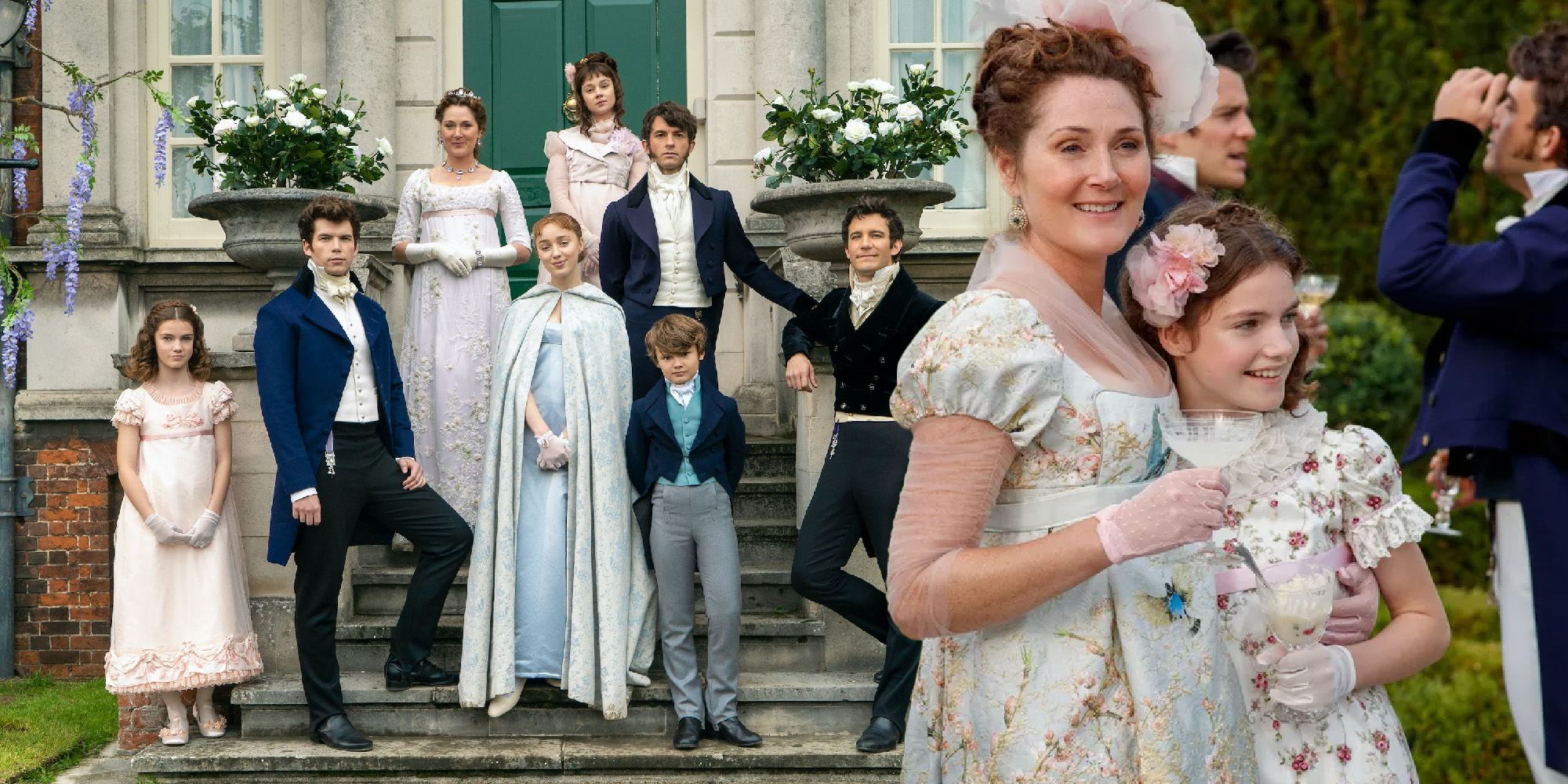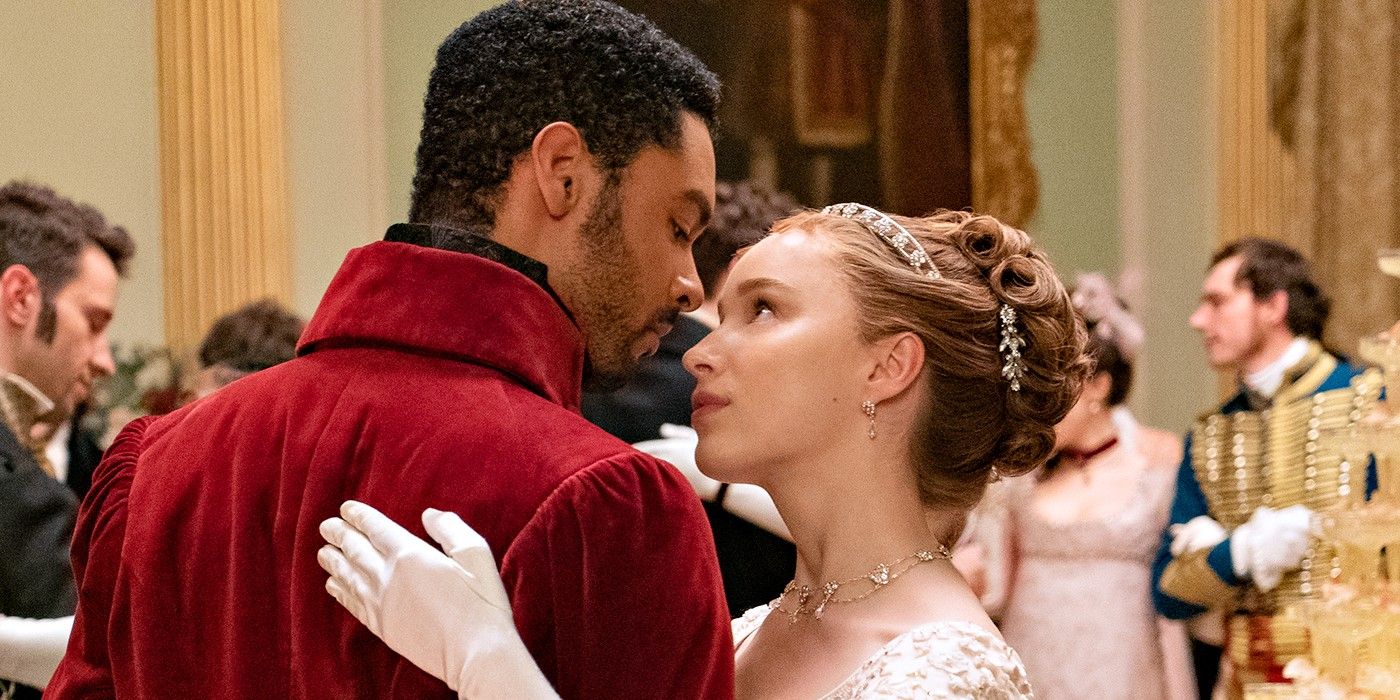
WARNING: Spoilers for Bridgerton season 1 (paragraphs four and five).
What's the deal with the A-B-C naming structure of the Bridgerton family members? Based on Julia Quinn's eponymous book series, the Netflix adaptation doesn't spend too much time on the specifics, but does provide the occasional clue. For those who are familiar with the source material, the gossip columnist Lady Whistledown seemingly provides the best explanation.
Bridgerton stars Jonathan Bailey as Anthony Bridgerton, the eldest of eight siblings who worries about his legacy as the family's surviving patriarchal figure. Luke Thompson co-stars as the artistic Benedict Bridgerton, and Luke Newton portrays the third son, Colin Bridgerton, who is mostly concerned about finding a suitable partner. In the primary female role, Phoebe Dynevor stars as Daphne Bridgerton - who is arguably the most eligible bachelorette in 1813 high society London - and Claudia Jessie co-stars as her younger sister, Eloise, who enjoys the fact that she doesn't have to immediately marry. Bridgerton season 1 also features Ruby Stokes as Francesca Bridgerton, Will Tilston as Gregory Bridgerton, and Florence Hunt as Hyacinth Bridgerton.
During the opening 10 minutes of Bridgerton season 1, Daphne expresses her wish to continue the "grand tradition" of her family. The moment not only foreshadows the series' primary storyline, but also sets up a reference to the alphabetic nature of the siblings' first names. When new dresses arrive at the Bridgerton family home, Eloise adopts the print persona of Lady Whistledown, who reveals in her gossip publication that she loathes the oldest-to-youngest naming structure of the Bridgerton clan. The mother, Violet Bridgerton (Ruth Gemmell), tells Daphne that she and her late husband took an "orderly" approach when naming their children, whereas gossip columnist Lady Whistledown identifies a sense of "banality" in her article. From there, none of the Bridgerton family members worry too much about the public jab, though all of them pay close attention to Lady Whistledown's commentaries - especially Daphne.

In Quinn's Bridgerton book series, the naming structure in question is expanded upon by Lady Whistledown. According to the "Society Papers" columnist, it's a mark of peculiarity, one that seems designed to further establish the family members as unique. From an outsider's perspective, the Bridgertons may have already been just that, especially as they all look "remarkably alike," according to Lady Whistledown. By the season finale of Bridgerton season 1, Lady Whistledown's motivations for spreading scandal become clear, especially in terms of how she writes about appealing high society women such as Daphne, along with Marina Thompson (Ruby Barker) - a relative of the Featherington family who sets her eyes on Colin Bridgerton (Luke Newton) while protecting a rather significant secret.
Netflix's Bridergton season 1 concludes with a cheeky reference to the familial naming tradition. In a post-script moment when Daphne gives birth to a son, her husband Simon (Regé-Jean Page) - the Duke of Hastings - jokes that the child's name will have to start with the letter "A" as a matter of tradition. Given Simon's overall character arc, the moment highlights his evolution as an individual, evidenced by the fact that he previously dismissed the idea of ever becoming a father. After finding love with Daphne, the Duke of Hastings is able to find humor in traditions that he once so vehemently rejected.
from ScreenRant - Feed https://ift.tt/2MumyuP

No comments:
Post a Comment